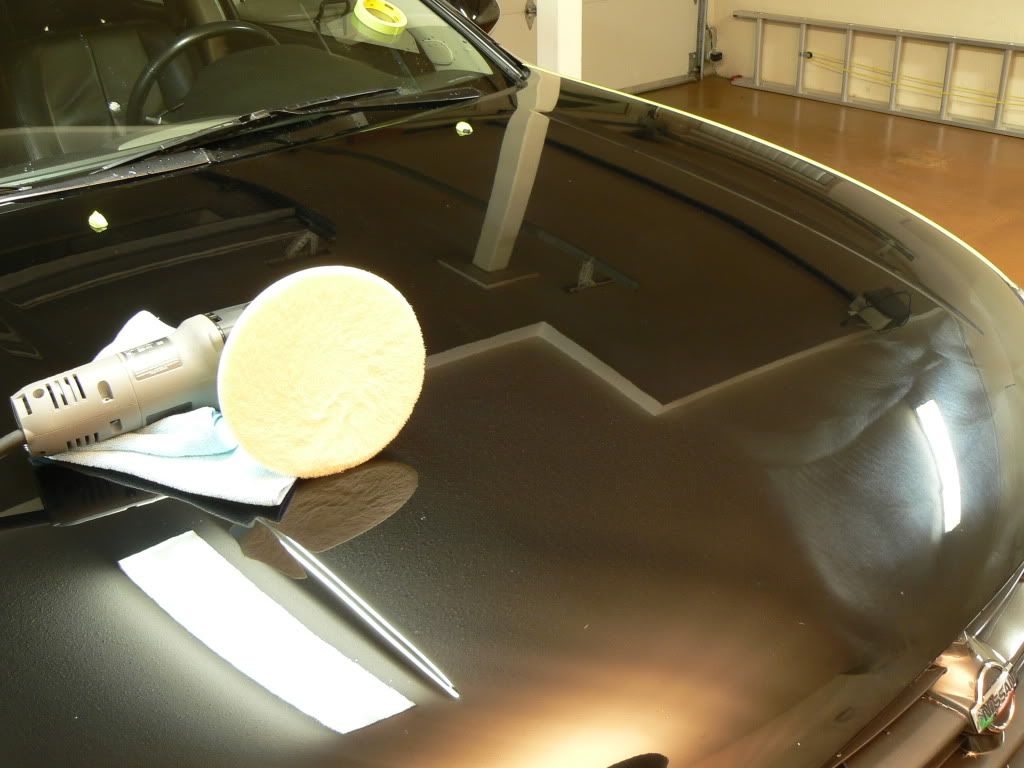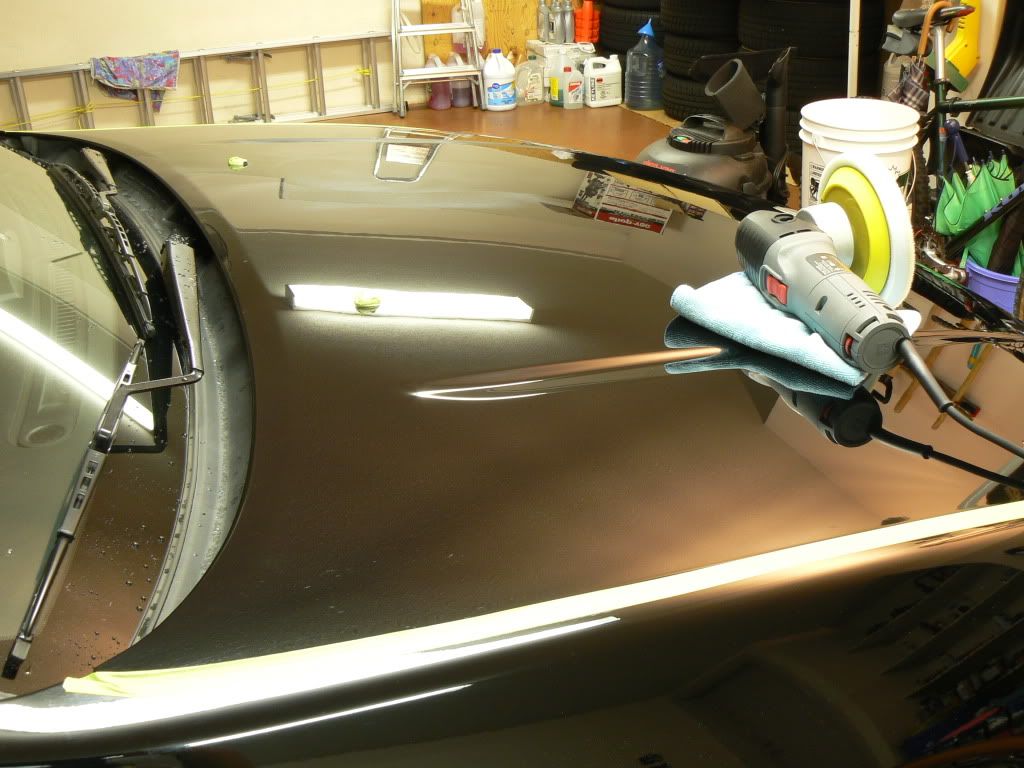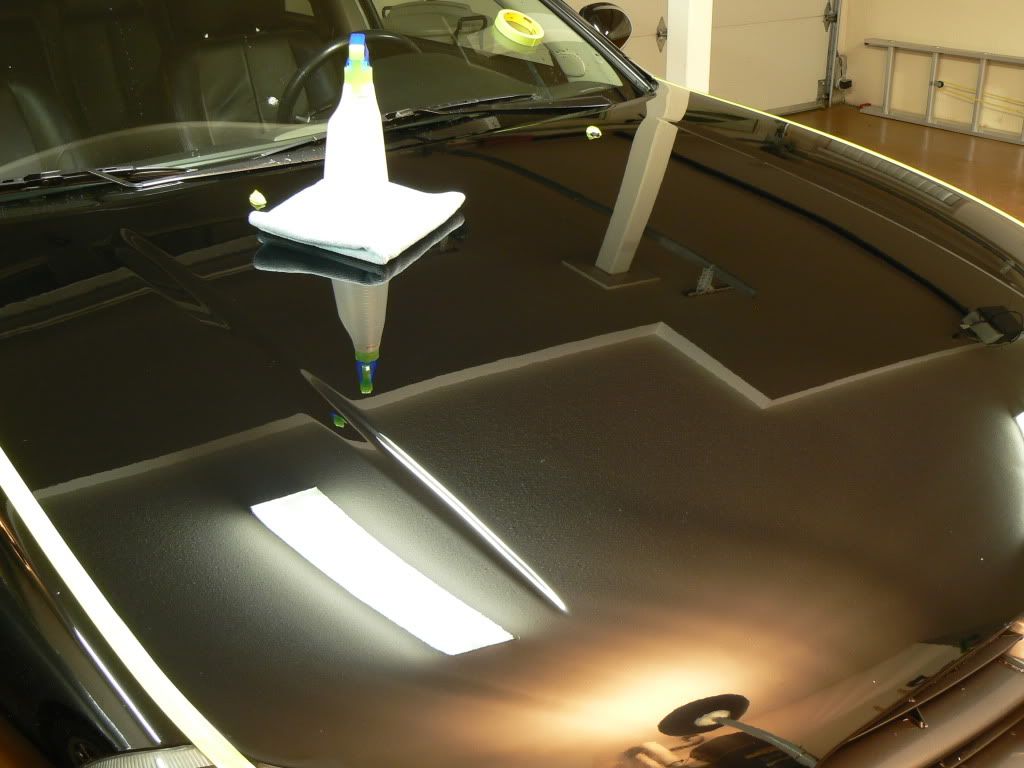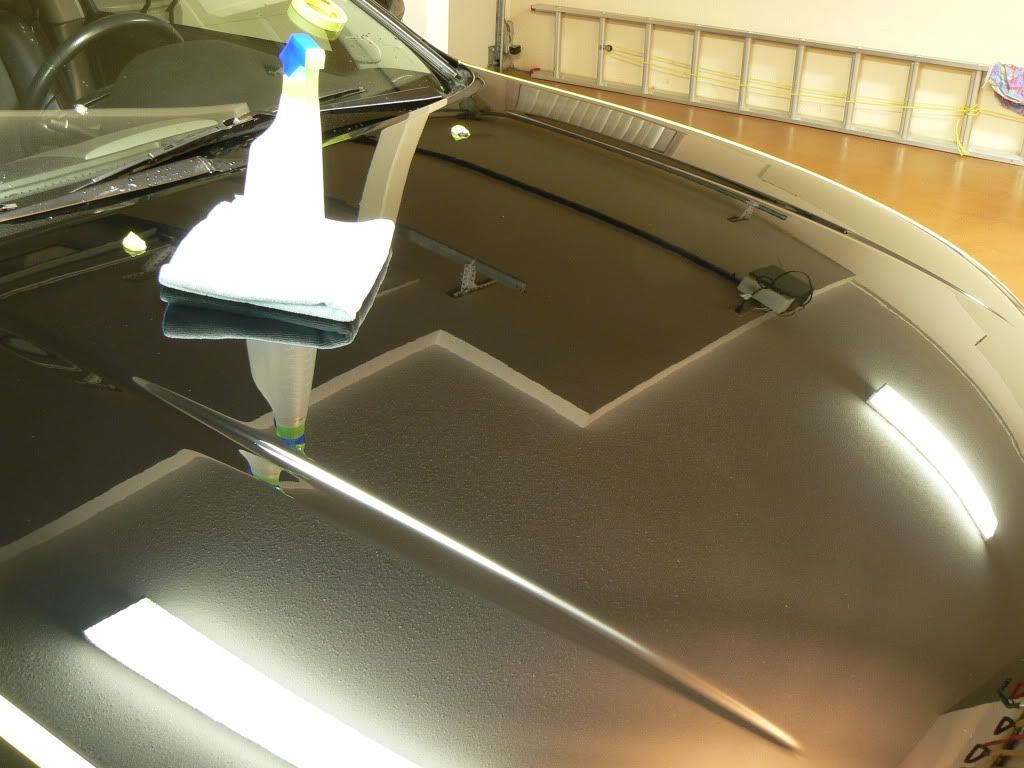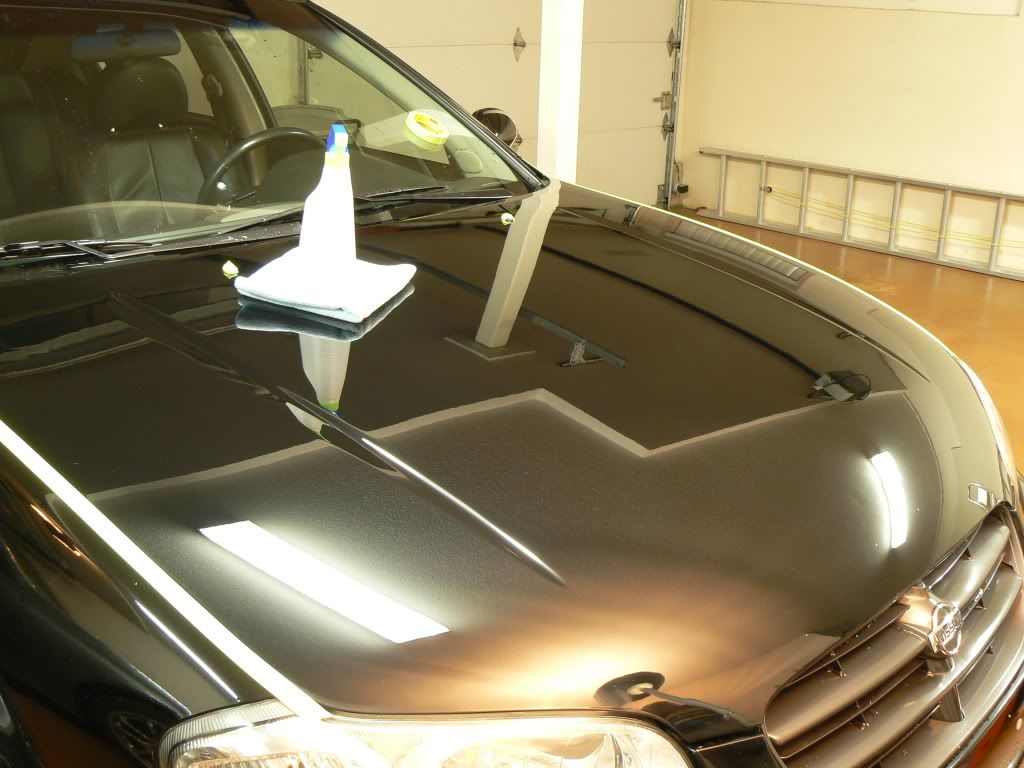Hey guys, I apologize for posting to a thread that's almost half a year old. I just want to share my results. Unfortunately, I do not have before pictures, as they were pretty useless. My camera is unable to capture the defects prior to the paint correction being described below. It is really hard to capture defects on the silver metallic paint. However, defects are much easier to spot in person!
A few weeks ago, I wetsanded my hood to remove some orange peel. Although I removed much of the sanding marks using the DA and a cutting pad, I was left with a few tracers and some sanding hazes on the hood. The tracers were caused by the 2000 grit and 2500 sandpaper. I decided to experiment two different methods to remove the deeper sanding marks.
The Procedures:
Setup 1 - 7" Surbuf Pad + 7424XP at Speed 6
Setup 2 - 6.5" Purple Foamed Wool + Makita Rotary at up to 2000rpm
Compound - M105
Lubrication for Surbuf - Last Touch 1:1 upon the recommendation of KB
I split the hood into two sections. I used the rotary on the passenger side and the DA on the driver side. I worked in sections of roughly 2' x 2'. Surface wiped with 1:1 99% Alcohol and Distilled Water after each pass and observed under the afternoon sun.
The two pads being compared:
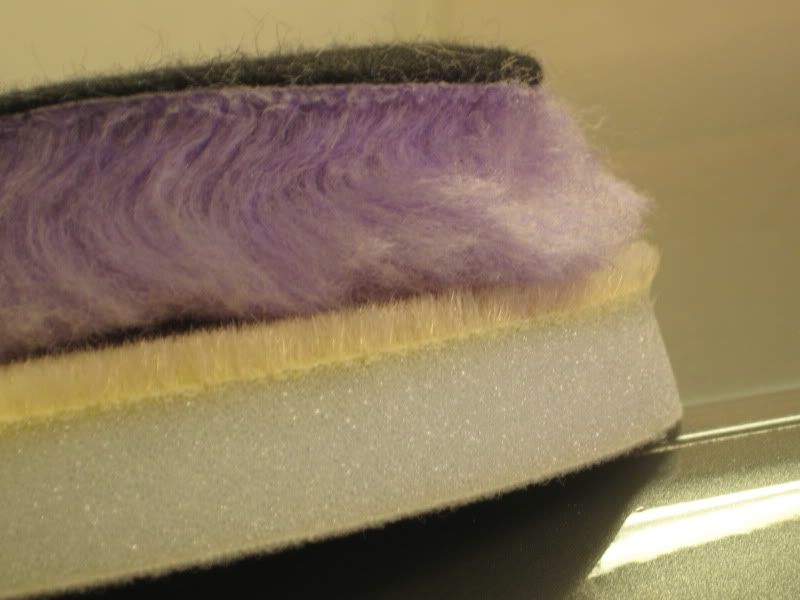
The Surbuf R series compared to the traditional Wool Pad:
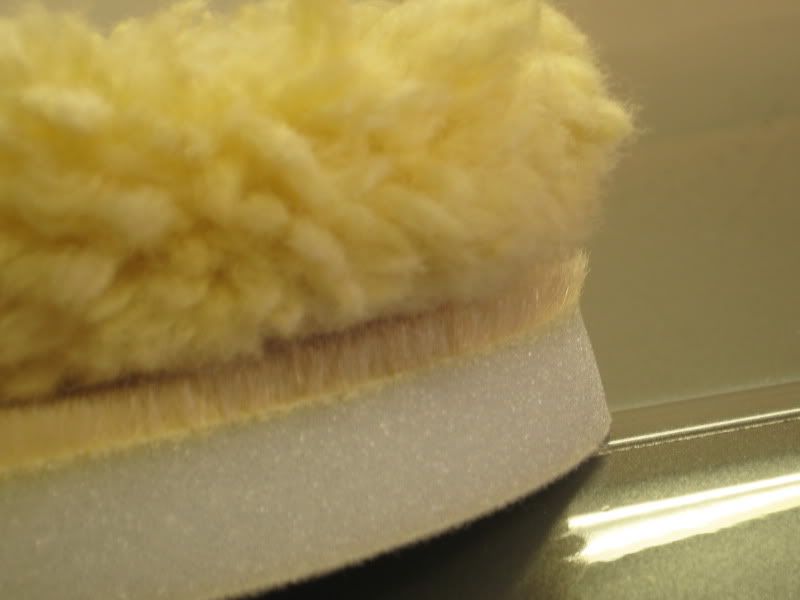
Observations:
Rotary + PFW:
As expected, the rotary coupled with the PFW was able to remove a majority of the remaining sanding marks and tracers in just one pass. After a wiping down the working area, and then observing the area under the sun, there were still a couple of very light scratches remaining. I gave the area another pass using the rotary and then wiping down the area with alcohol. I spent 10min looking for scratches in the 2' x 2' area to look for any remaining sanding scratches, but couldn't find any. As advertised, the LC PFW was able to remove deep sanding scratches, without causing any hazes and swirls.
DA + Surbuf R-Series:
After I completed the passenger side of the hood, I had a pretty good benchmark for the Surbuf pads. I utilized the Surbuf pads using the methods found in this thread here. I also used diluted alcohol to wipe down the working area after each pass and inspected the surface under the sun. Similar to the PFW + Rotary, the Surbuf + DA combo completely removed all the sanding scratches with just two passes. In my opinion, that was amazing, but also expected. Amazingly, the Surbuf pad and M105 finish very nicely without any nicks or scratches. In fact, the finish produced by the Surbuf pad is MUCH better than that produced by the orange cutting pad!!!! Keep in mind that the Surbuf R-Series pad is also designed for applying automotives waxes to automotive paint surfaces, according to the manufacturer! That explains why the M105 is able to finish nicely using the Surbuf pad. The Surbuf pad finishes very similar to the PFW. With that said, I would never use the Surbuf pads to apply any waxes.
From my observation, the rate of cut using the PFW and the rotary is slightly quicker than the DA + Surbuf. However, the difference is extremely minimal. Both methods cut at such a similar rate, it was shocking. Another thing is that I was able to maximize the working time of M105 by utilizing Kevin's prescribed method to work on the Surbuf pads. That increase in working time of the Surbuf pad compensates for its less aggressive pad material and rotational speed.
One of the best features of the Surbuf pad is that it generates very little friction, allowing the DA to rotate almost at its maximum speed. The Surbuf pad also uses MUCH less product than the PFW pad. Unlike wool, the surbuf microfingers are extremely short, making them ideal to use with the DA.
Another thing I notice is that the Surbuf pad generates LESS heat than the typical cutting FOAM pad on a DA. Using the PFW pad with the rotary at up to 2000rpm, the hood was a little warm to the touch, but cooler than expected. The PFW feels much more gentle to the touch than the traditional 4ply wool pad. I can imagine that the 4 ply wool pad to get quite hot at speeds of around 2000rpm.
I think I like the Surbuf pads. At least they do not smell like sheep when you wash them!
Anyway, here are some pictures (unfortunately the sun started to set when I begin taking pictures):
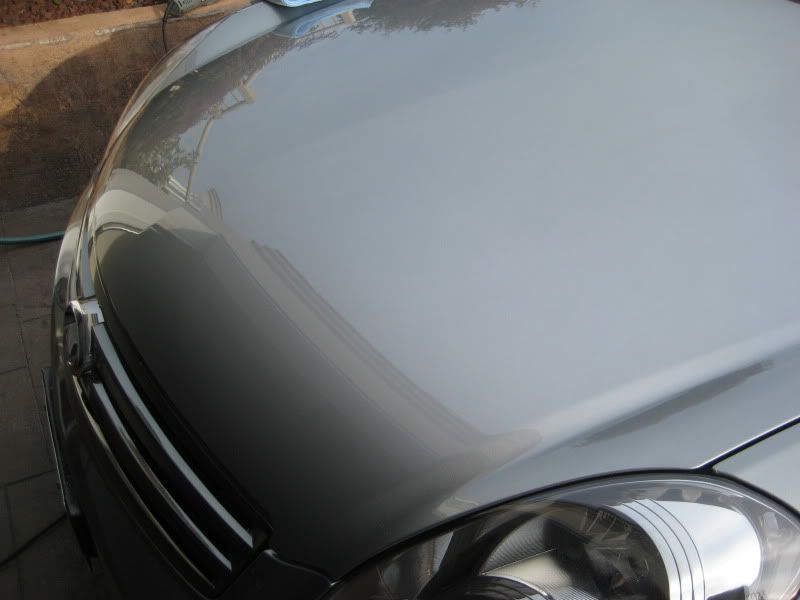

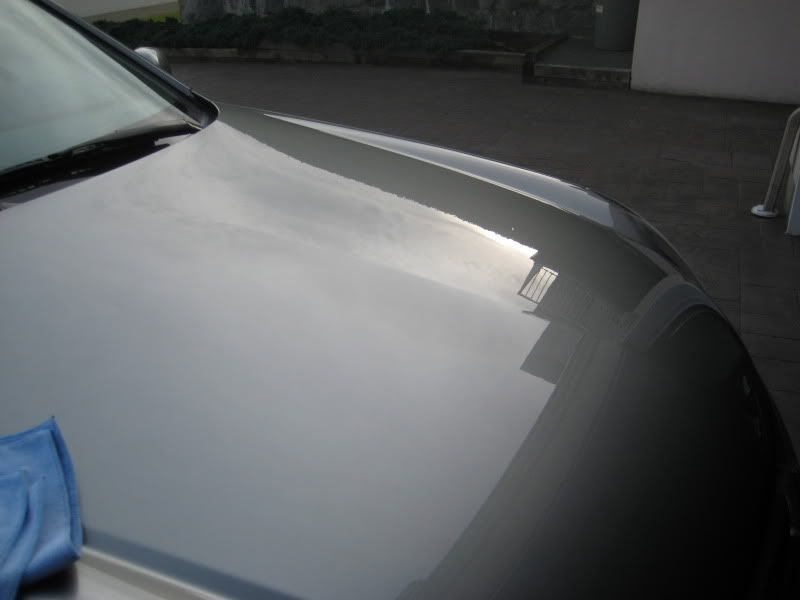
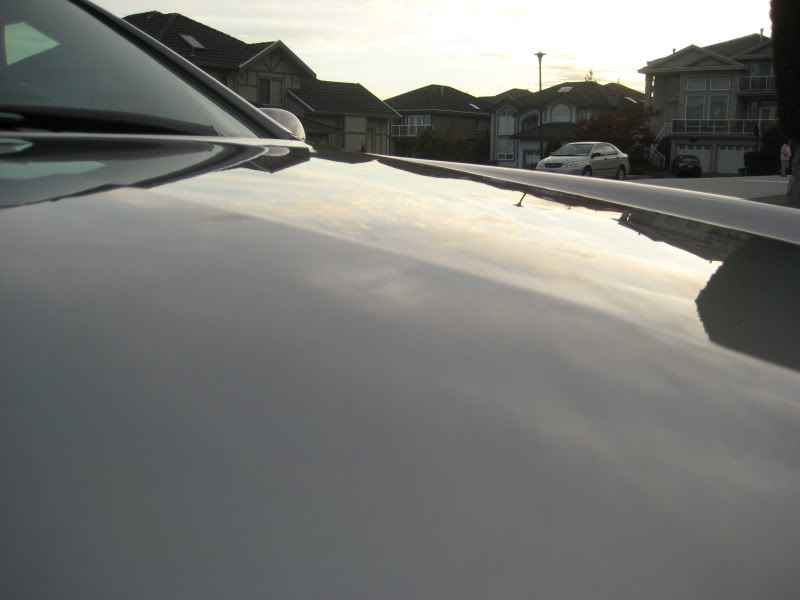
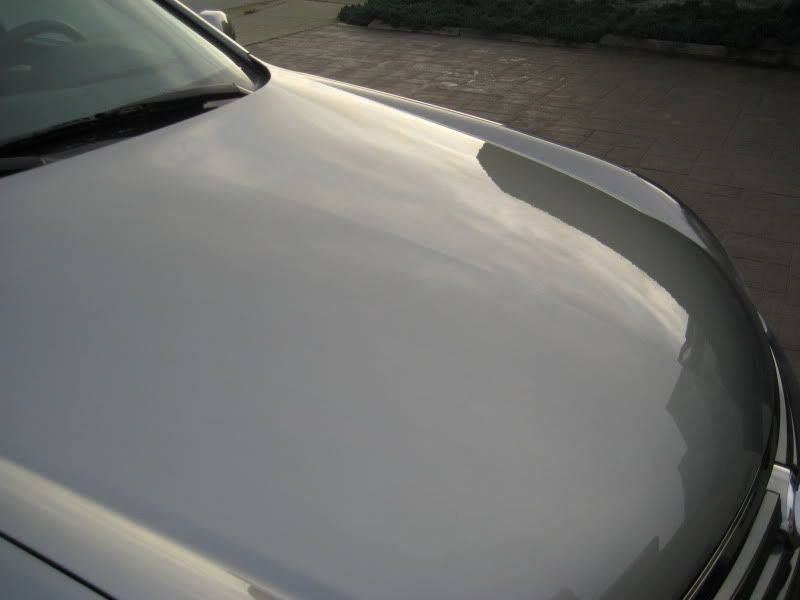
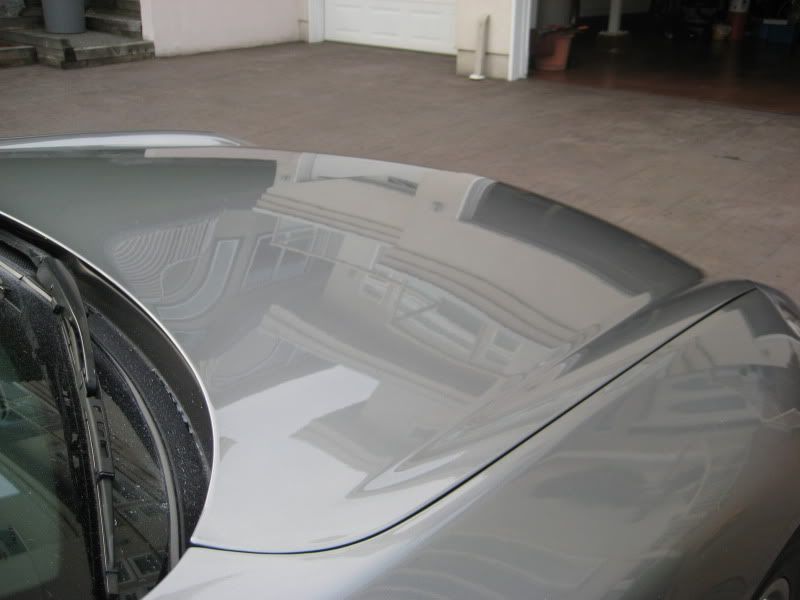
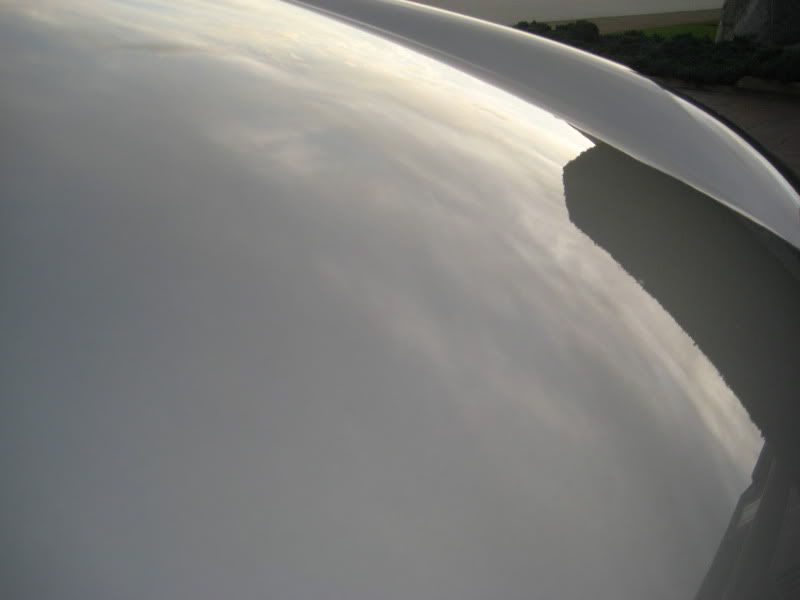

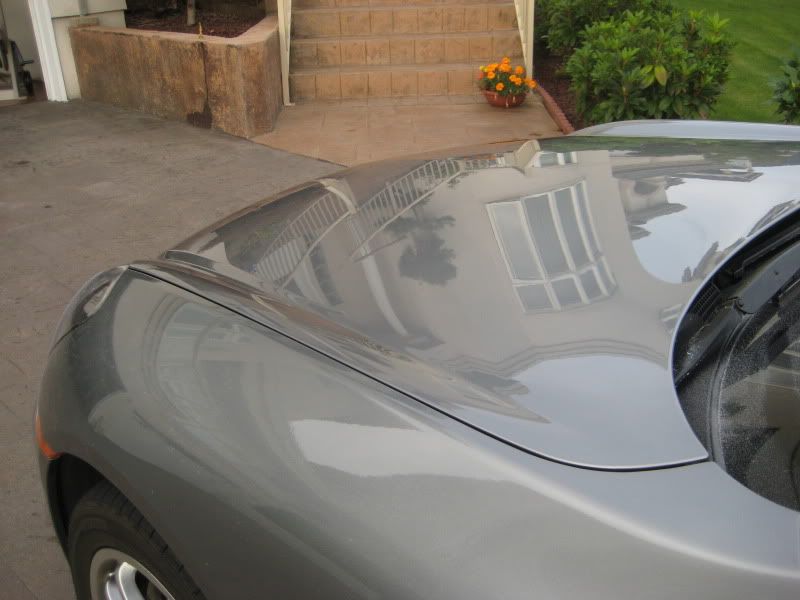
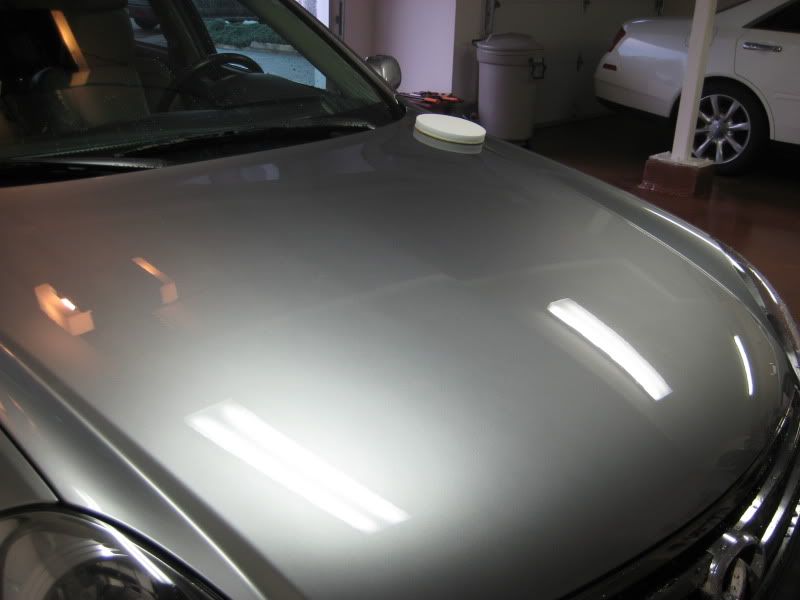

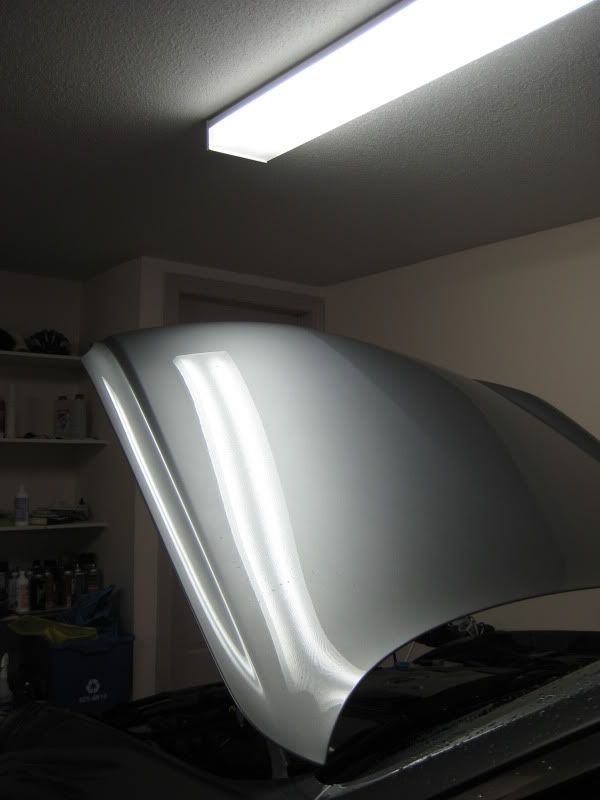
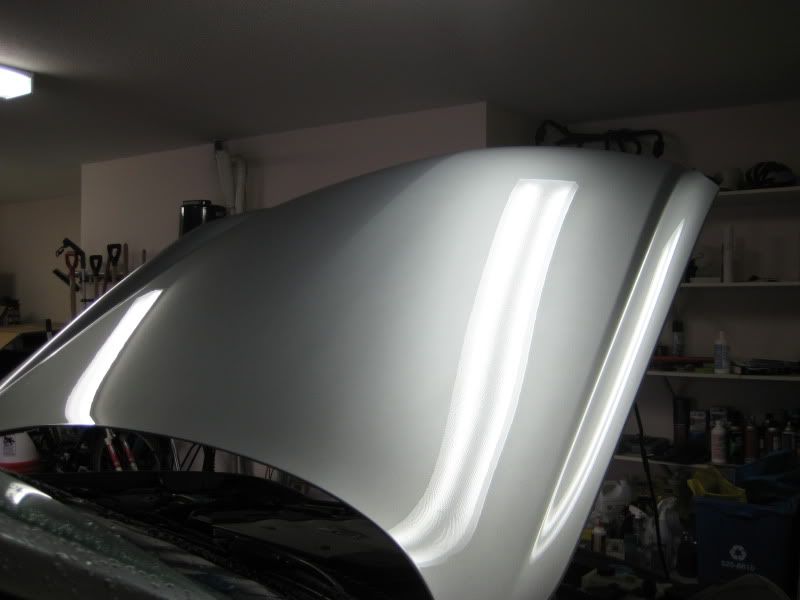
A few weeks ago, I wetsanded my hood to remove some orange peel. Although I removed much of the sanding marks using the DA and a cutting pad, I was left with a few tracers and some sanding hazes on the hood. The tracers were caused by the 2000 grit and 2500 sandpaper. I decided to experiment two different methods to remove the deeper sanding marks.
The Procedures:
Setup 1 - 7" Surbuf Pad + 7424XP at Speed 6
Setup 2 - 6.5" Purple Foamed Wool + Makita Rotary at up to 2000rpm
Compound - M105
Lubrication for Surbuf - Last Touch 1:1 upon the recommendation of KB
I split the hood into two sections. I used the rotary on the passenger side and the DA on the driver side. I worked in sections of roughly 2' x 2'. Surface wiped with 1:1 99% Alcohol and Distilled Water after each pass and observed under the afternoon sun.
The two pads being compared:

The Surbuf R series compared to the traditional Wool Pad:

Observations:
Rotary + PFW:
As expected, the rotary coupled with the PFW was able to remove a majority of the remaining sanding marks and tracers in just one pass. After a wiping down the working area, and then observing the area under the sun, there were still a couple of very light scratches remaining. I gave the area another pass using the rotary and then wiping down the area with alcohol. I spent 10min looking for scratches in the 2' x 2' area to look for any remaining sanding scratches, but couldn't find any. As advertised, the LC PFW was able to remove deep sanding scratches, without causing any hazes and swirls.
DA + Surbuf R-Series:
After I completed the passenger side of the hood, I had a pretty good benchmark for the Surbuf pads. I utilized the Surbuf pads using the methods found in this thread here. I also used diluted alcohol to wipe down the working area after each pass and inspected the surface under the sun. Similar to the PFW + Rotary, the Surbuf + DA combo completely removed all the sanding scratches with just two passes. In my opinion, that was amazing, but also expected. Amazingly, the Surbuf pad and M105 finish very nicely without any nicks or scratches. In fact, the finish produced by the Surbuf pad is MUCH better than that produced by the orange cutting pad!!!! Keep in mind that the Surbuf R-Series pad is also designed for applying automotives waxes to automotive paint surfaces, according to the manufacturer! That explains why the M105 is able to finish nicely using the Surbuf pad. The Surbuf pad finishes very similar to the PFW. With that said, I would never use the Surbuf pads to apply any waxes.
From my observation, the rate of cut using the PFW and the rotary is slightly quicker than the DA + Surbuf. However, the difference is extremely minimal. Both methods cut at such a similar rate, it was shocking. Another thing is that I was able to maximize the working time of M105 by utilizing Kevin's prescribed method to work on the Surbuf pads. That increase in working time of the Surbuf pad compensates for its less aggressive pad material and rotational speed.
One of the best features of the Surbuf pad is that it generates very little friction, allowing the DA to rotate almost at its maximum speed. The Surbuf pad also uses MUCH less product than the PFW pad. Unlike wool, the surbuf microfingers are extremely short, making them ideal to use with the DA.
Another thing I notice is that the Surbuf pad generates LESS heat than the typical cutting FOAM pad on a DA. Using the PFW pad with the rotary at up to 2000rpm, the hood was a little warm to the touch, but cooler than expected. The PFW feels much more gentle to the touch than the traditional 4ply wool pad. I can imagine that the 4 ply wool pad to get quite hot at speeds of around 2000rpm.
I think I like the Surbuf pads. At least they do not smell like sheep when you wash them!
Anyway, here are some pictures (unfortunately the sun started to set when I begin taking pictures):














